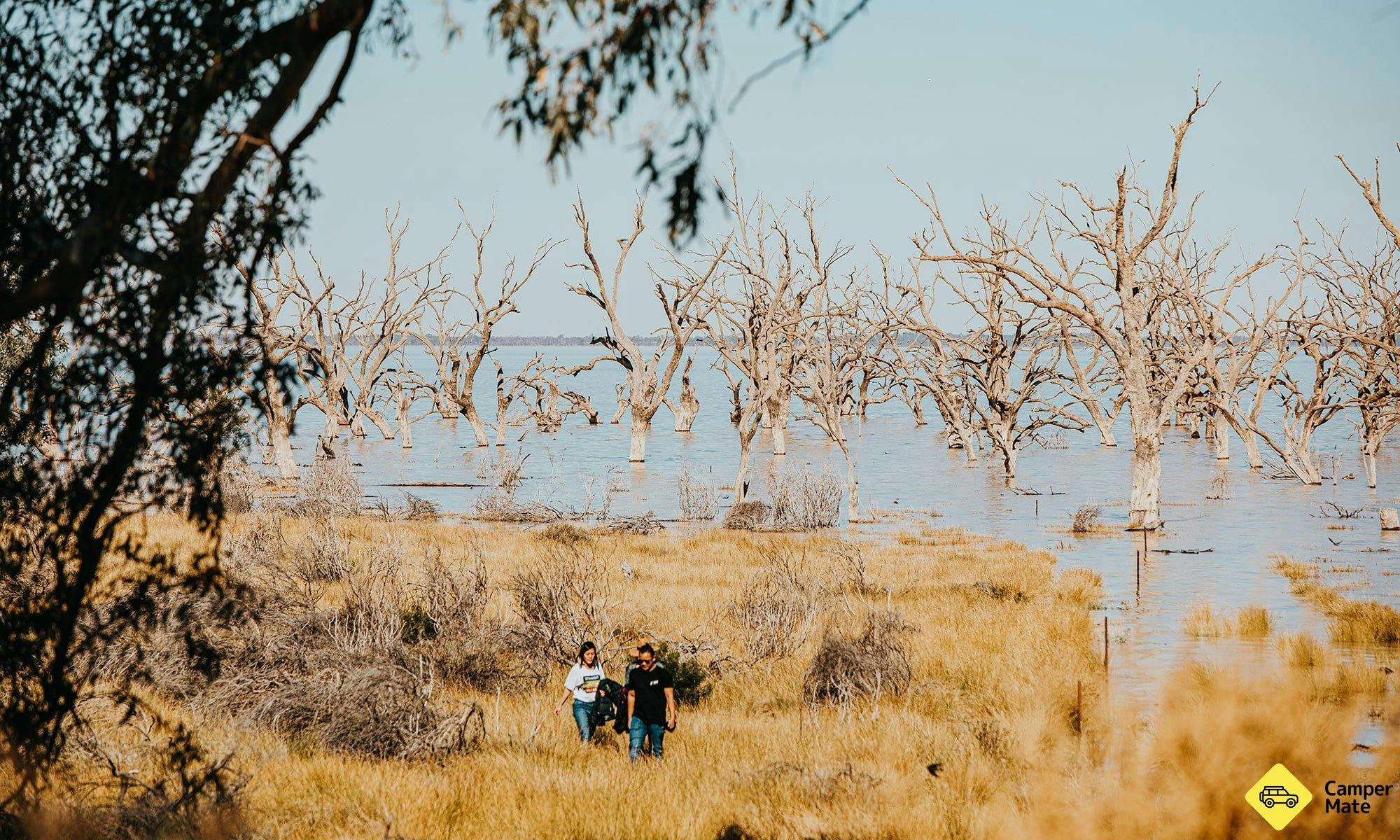
New South Wales
Explore a forest of drowned trees at Menindee Lakes
June 23, 2021 • Matt Cheok
5 min read
It’s not all desolate landscape in far-west Outback NSW. In fact, since this year’s March floods, there’s been plenty of signs of life as the Darling River fills up from the fresh river flows, and releases into Menindee’s lakes. After lengthy periods of drought, its aquatic and bird populations have returned to this inland wonderland, and now, all that’s missing is you!
Menindee Lakes is home to a majestic forest of dead eucalyptus trees (of the black box variety), which mysteriously appear to rise above its waters. This grandeur is only exceeded by the pounding sensation of gallons of water tumbling into the surrounding lakes from the weirs above (barriers that control the flow and release of water) — and it’s truly a sight to behold.
For good measure, you’re also at the doorstep of the magnificent Kinchega National Park, so there’s plenty to see and explore. Here’s how to do it.
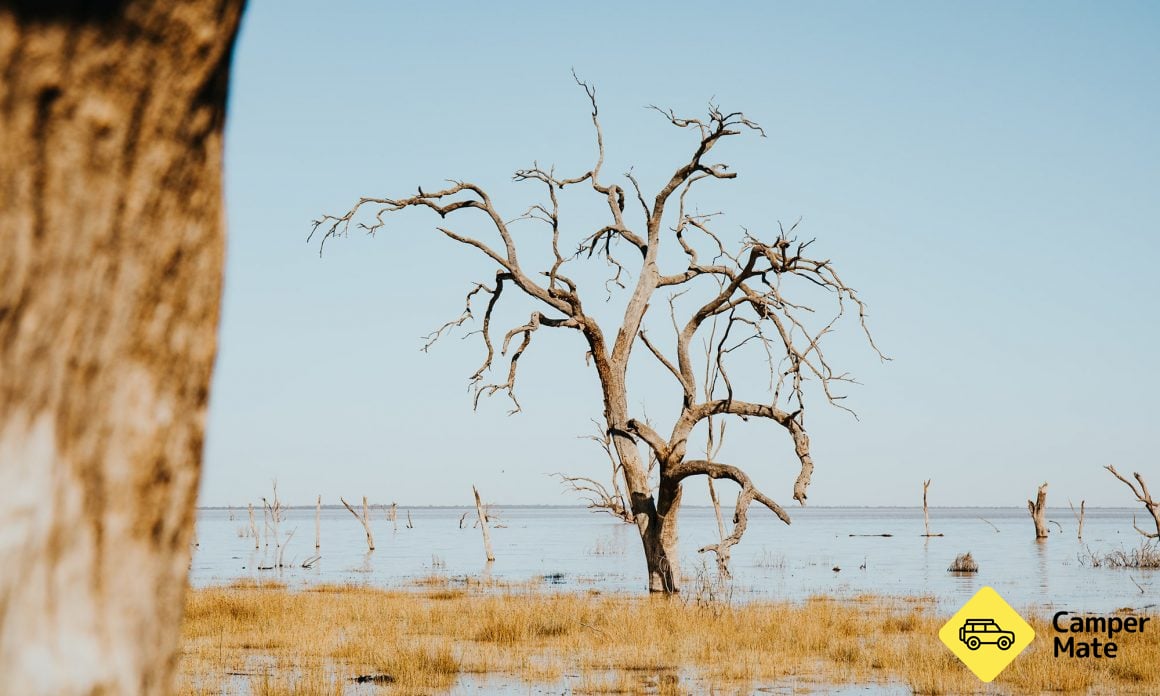
Getting there
From Broken Hill, it’s a little over an hour’s drive along a sealed road, or about three from Mildura. Menindee is definitely accessible from Wilcannia, Ivanhoe and Wentworth, but you’ll have to traverse a bumpy set of unsealed roads, which is best left to those travelling in 4WD vehicles (particularly after heavy rainfall). If in doubt, ring Broken Hill’s National Park office for the latest road conditions.
On a personal note, the sealed bitumen was definitely my preferred driving surface and a welcomed respite for someone navigating the Outback in a campervan.
See and do
Start exploring at Lake Menindee Lookout. Cross the railway tracks and wander along the Menindee Lake Dam Wall for a view of the cascading waters below. It’s also worthwhile descending to the water’s edge to observe the eucalyptus trees up close and personal.
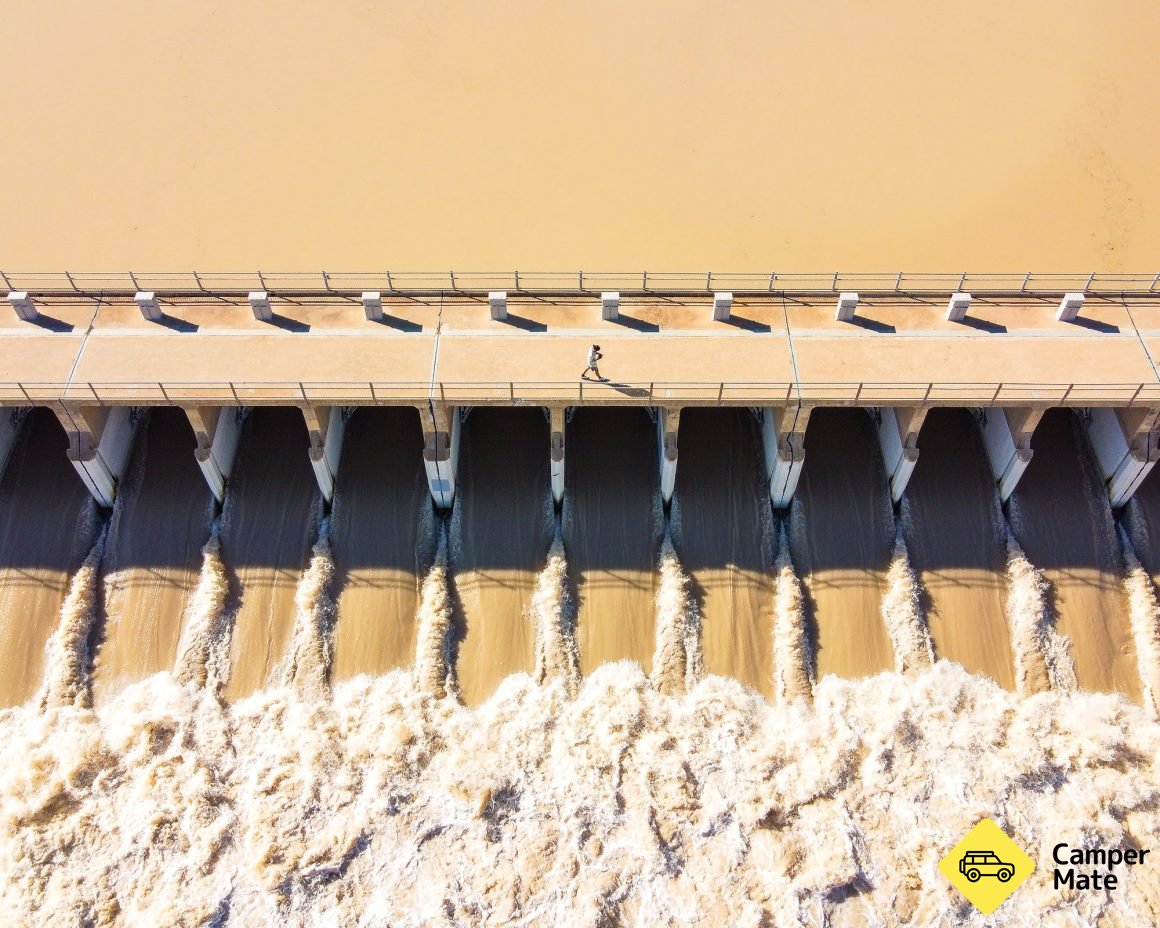
Menindee Lake Dam Wall
Hop back into your vehicle and take the turn-off towards Copi Hollow Lake, following the road all the way down to the caravan park. Here you’ll find the perfect leafy spot by the water, which is ideal for a lunch break. If you’re feeling brave, it’s possible to submerge in its waters, otherwise, simply soak up the views on the grass.
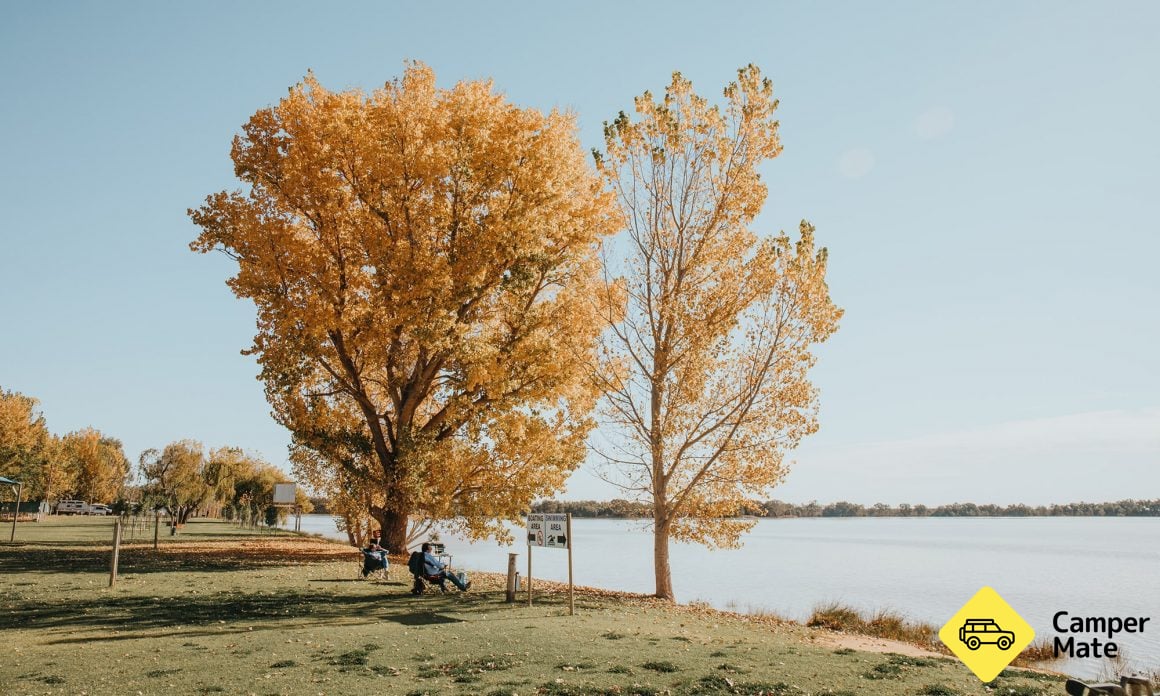
Copi Hollow Lake
Continue along the unsealed dirt road towards Lake Pamamaroo. As a reward for the bumpy commute, you’ll be spoiled with incredible reflection views of the dead tree forest below you — the best vantage point in the entire region. The walking trails by the shoreline are worth navigating but expect to get your shoes bogged in the muddy and unstable surface (like I did).
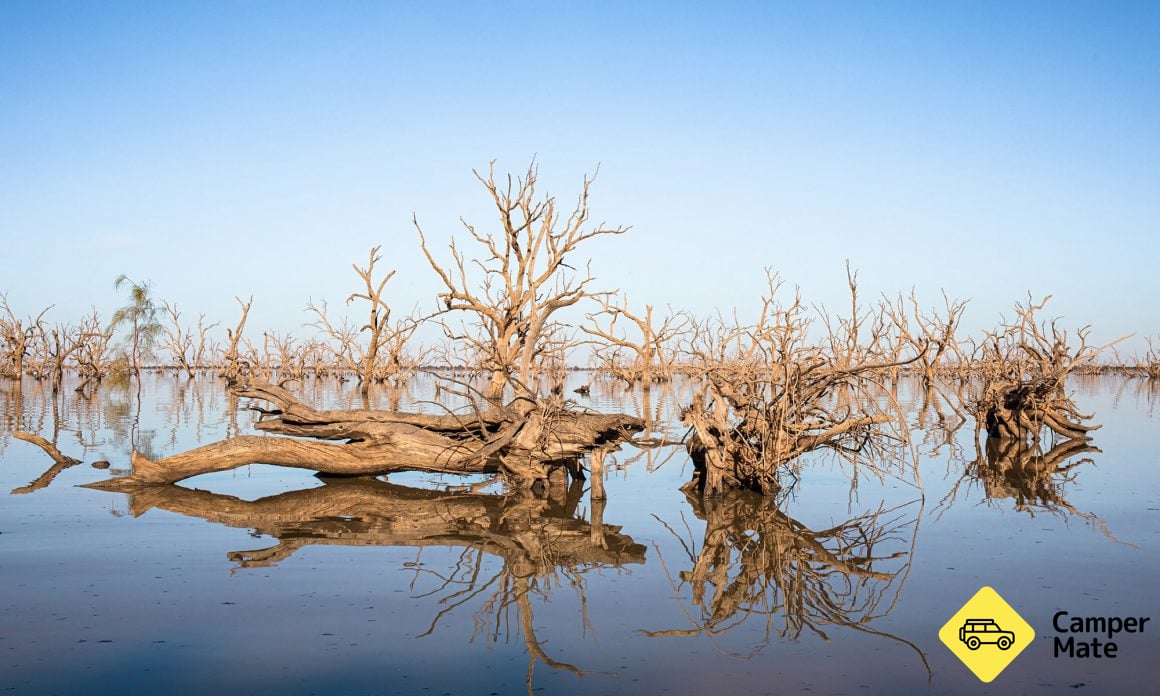
Reflections at Lake Pamamaroo
As you make your way towards Menindee’s Main Weir,you’ll see a parade of campervans and vehicles parked by the water’s edge. You can free camp anywhere you please and there’s plenty of space. Set up shop, cook up a tasty feed and marvel at the colours of the lake as the sun goes down. It’ll take your breath away!
TIP — If you’re camping with a lightweight tent, make sure you’ve got a groundsheet handy (a basic tarp will do the job) as the ground is fairly tough and unforgiving. There’s nothing worse than getting a tear at the base of your tent, especially out here!
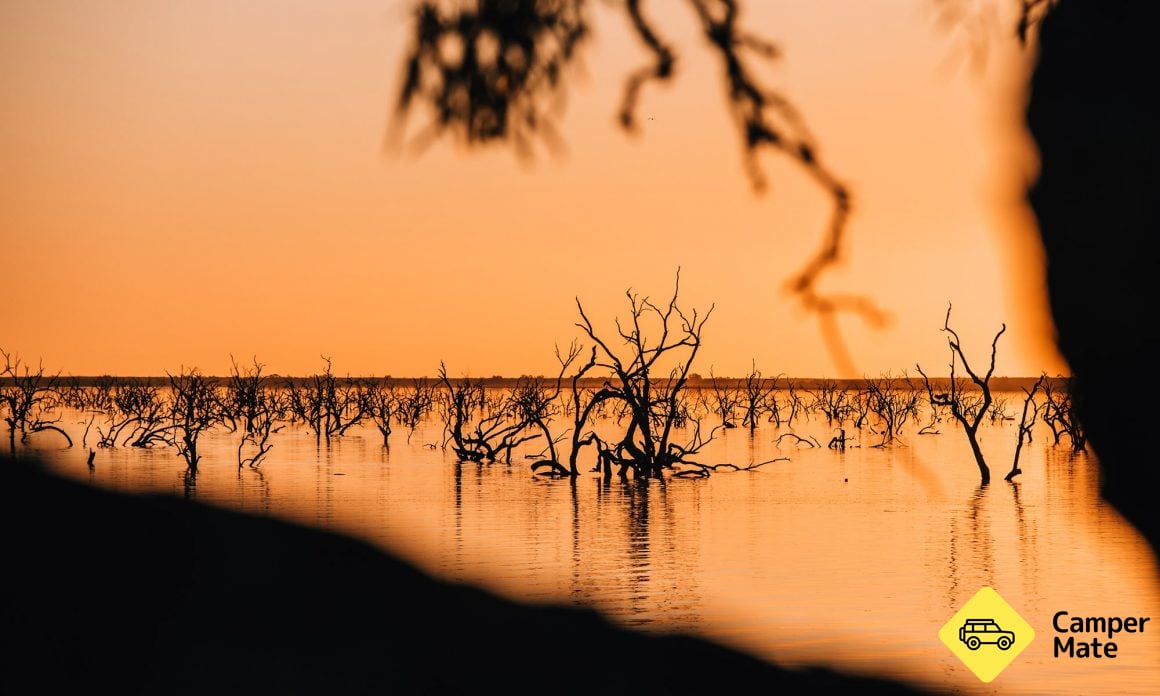
Sunset camping views
Kinchega National Park
Imagine this — you’re surrounded by red sand dunes, river gum silhouettes and riverbanks. The nature overload is astounding and it truly feels like you’re traipsing about in the middle of nowhere. Kinchega’s waterways attract a bounty of wildlife, including emus, kangaroos, galahs and goannas, which you’ll certainly encounter on your visit inside the National Park. You’ve got three excellent driving trails: The River Drive (20km), Lake Drive (18km) and Woolshed Drive (6.5km), which are easy to follow and well-signposted.
Park fees and the nitty gritty
To enter Kinchega, you’ll need to pay an $8 vehicle fee (per day), which can be made at the entrance by cash in an envelope. You’ll need to bring exact change as there’s no attendant or option to pay by card. A reminder that you can’t bring pets and there’s also a fire ban in place between October — March.
A history in brief
Kinchega’s traditional owners were the Paakantyi people who navigated up and down the Darling River on the park’s eastern edge. It’s also well known for its woolshed, where some 6 million sheep were shorn. These shearing quarters remain carefully preserved and viewable on your visit to the park.
Kinchega Homestead Billabong Walk
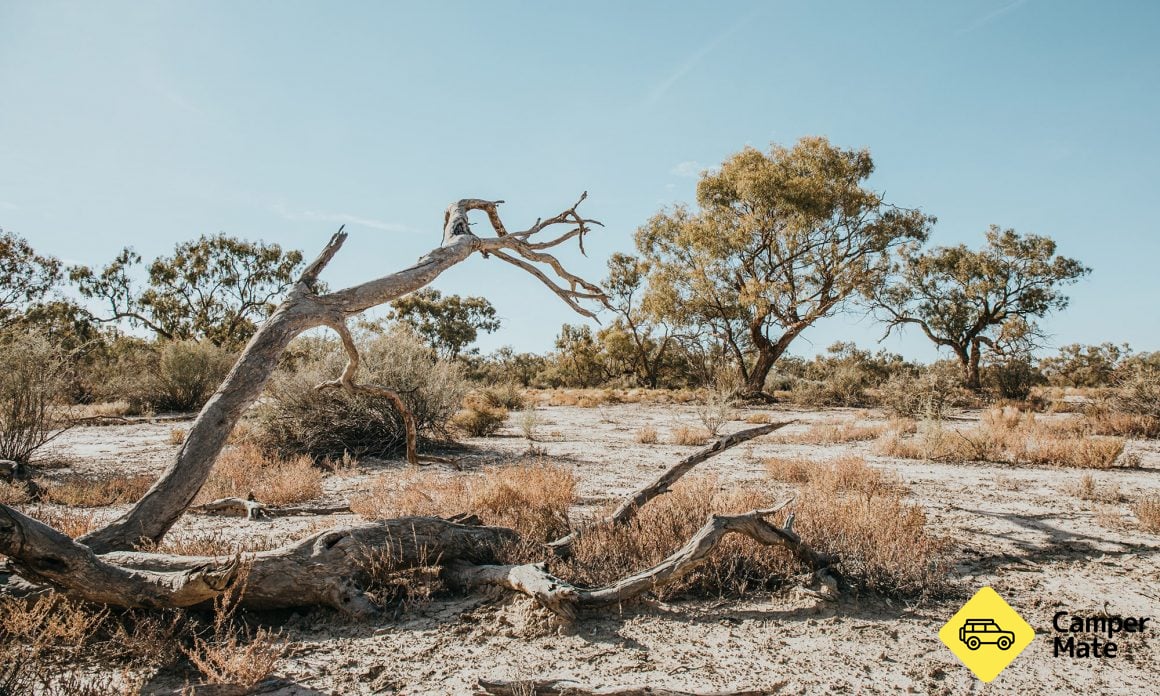
Along the Kinchega Homestead Billabong Walk
I’d highly recommend this 2.3km, 1.5 hours loop that commences at the Old Kinchega Homestead Carpark. It was certainly the highlight of my visit. You’ll wander through thick scrub, open plains and an impressive billabong by Campsite 34 at the end of the loop. If you have the opportunity, I’d encourage you to stay here for a night!
Where to stay
In Menindee’s town centre you'll find a few local shops and restaurants, including basic accommodation, and the Menindee Bridge Caravan Park. Camping inside Kinchega National Park is where you'll have a truly authentic nature experience. Your options include Darling River, Emu Lake and Cawndilla campgrounds and there’s plenty of dedicated sites by the lake. Search CamperMate's maps to see all your options, and ensure you’ve booked online prior to arrival.
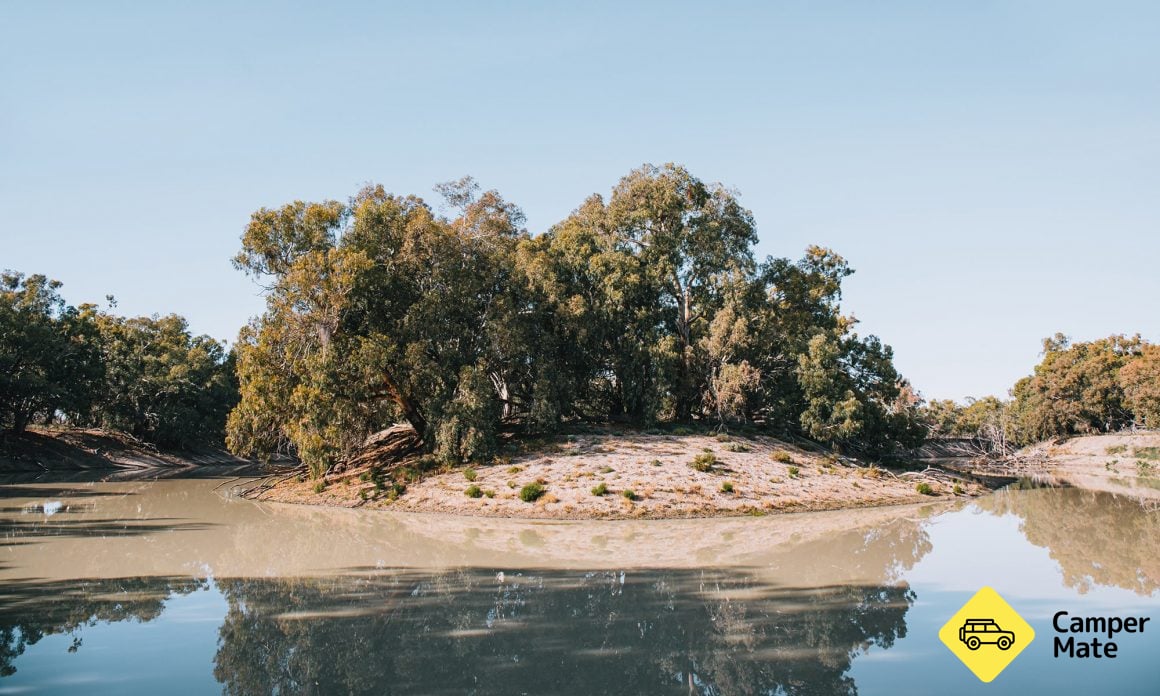
Views from Campsite 34, Old Billabong Walk
How long should I stay
If you’re only here to capture a view of the forest of dead trees, then a day trip from Broken Hill or Mildura is more than enough. I’d personally recommend spending at least two days here. You’ll get to witness a fantastic sunrise and sunset, whilst allowing enough time to explore Kinchega National Park.

